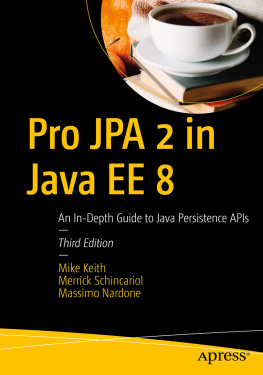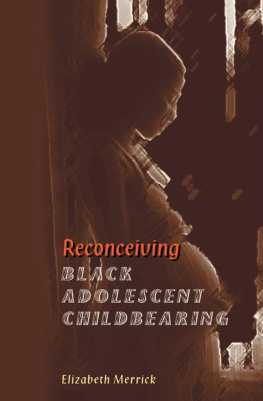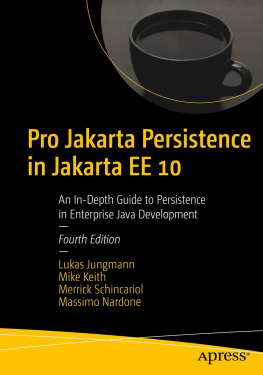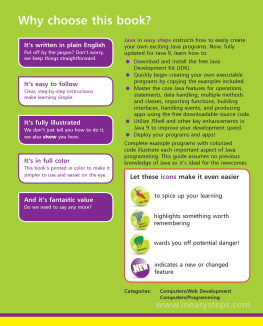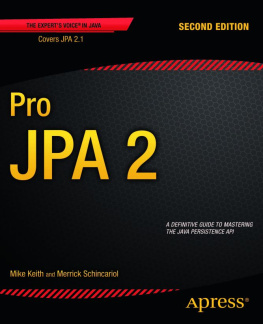Mike Keith Merrick Schincariol - Pro JPA 2 in Java EE 8
Here you can read online Mike Keith Merrick Schincariol - Pro JPA 2 in Java EE 8 full text of the book (entire story) in english for free. Download pdf and epub, get meaning, cover and reviews about this ebook. year: 0, publisher: Apress, Berkeley, CA, genre: Computer. Description of the work, (preface) as well as reviews are available. Best literature library LitArk.com created for fans of good reading and offers a wide selection of genres:
Romance novel
Science fiction
Adventure
Detective
Science
History
Home and family
Prose
Art
Politics
Computer
Non-fiction
Religion
Business
Children
Humor
Choose a favorite category and find really read worthwhile books. Enjoy immersion in the world of imagination, feel the emotions of the characters or learn something new for yourself, make an fascinating discovery.
- Book:Pro JPA 2 in Java EE 8
- Author:
- Publisher:Apress, Berkeley, CA
- Genre:
- Year:0
- Rating:3 / 5
- Favourites:Add to favourites
- Your mark:
- 60
- 1
- 2
- 3
- 4
- 5
Pro JPA 2 in Java EE 8: summary, description and annotation
We offer to read an annotation, description, summary or preface (depends on what the author of the book "Pro JPA 2 in Java EE 8" wrote himself). If you haven't found the necessary information about the book — write in the comments, we will try to find it.
Pro JPA 2 in Java EE 8 — read online for free the complete book (whole text) full work
Below is the text of the book, divided by pages. System saving the place of the last page read, allows you to conveniently read the book "Pro JPA 2 in Java EE 8" online for free, without having to search again every time where you left off. Put a bookmark, and you can go to the page where you finished reading at any time.
Font size:
Interval:
Bookmark:
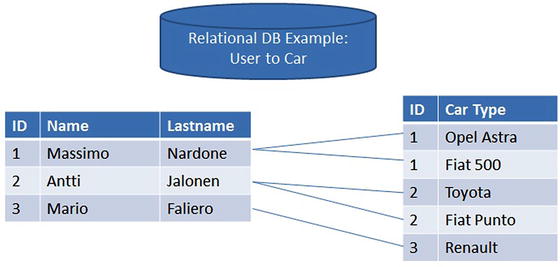
- Objects, not tables : Applications should be written in terms of the domain model, not bound to the relational model. It must be possible to operate on and query against the domain model without having to express it in the relational language of tables, columns, and foreign keys.
- Convenience, not ignorance : Mapping tools should be used only by someone familiar with relational technology. O-R mapping is not meant to save developers from understanding mapping problems or to hide them altogether. It is meant for those who have an understanding of the issues and know what they need, but who dont want to have to write thousands of lines of code to deal with a problem that has already been solved.
- Unobtrusive, not transparent : It is unreasonable to expect that persistence be transparent because an application always needs to have control of the objects that it is persisting and be aware of the entity lifecycle. The persistence solution should not intrude on the domain model, however, and domain classes must not be required to extend classes or implement interfaces in order to be persistable.
- Legacy data, new objects : It is far more likely that an application will target an existing relational database schema than create a new one. Support for legacy schemas is one of the most relevant use cases that will arise, and it is quite possible that such databases will outlive every one of us.
- Enough, but not too much : Enterprise developers have problems to solve, and they need features sufficient to solve those problems. What they dont like is being forced to eat a heavyweight persistence model that introduces large overhead because it is solving problems that many do not even agree are problems.
- Local, but mobile : A persistent representation of data does not need to be modeled as a full-fledged remote object. Distribution is something that exists as part of the application, not part of the persistence layer. The entities that contain the persistent state, however, must be able to travel to whichever layer needs them so that if an application is distributed, then the entities will support and not inhibit a particular architecture.
Font size:
Interval:
Bookmark:
Similar books «Pro JPA 2 in Java EE 8»
Look at similar books to Pro JPA 2 in Java EE 8. We have selected literature similar in name and meaning in the hope of providing readers with more options to find new, interesting, not yet read works.
Discussion, reviews of the book Pro JPA 2 in Java EE 8 and just readers' own opinions. Leave your comments, write what you think about the work, its meaning or the main characters. Specify what exactly you liked and what you didn't like, and why you think so.

